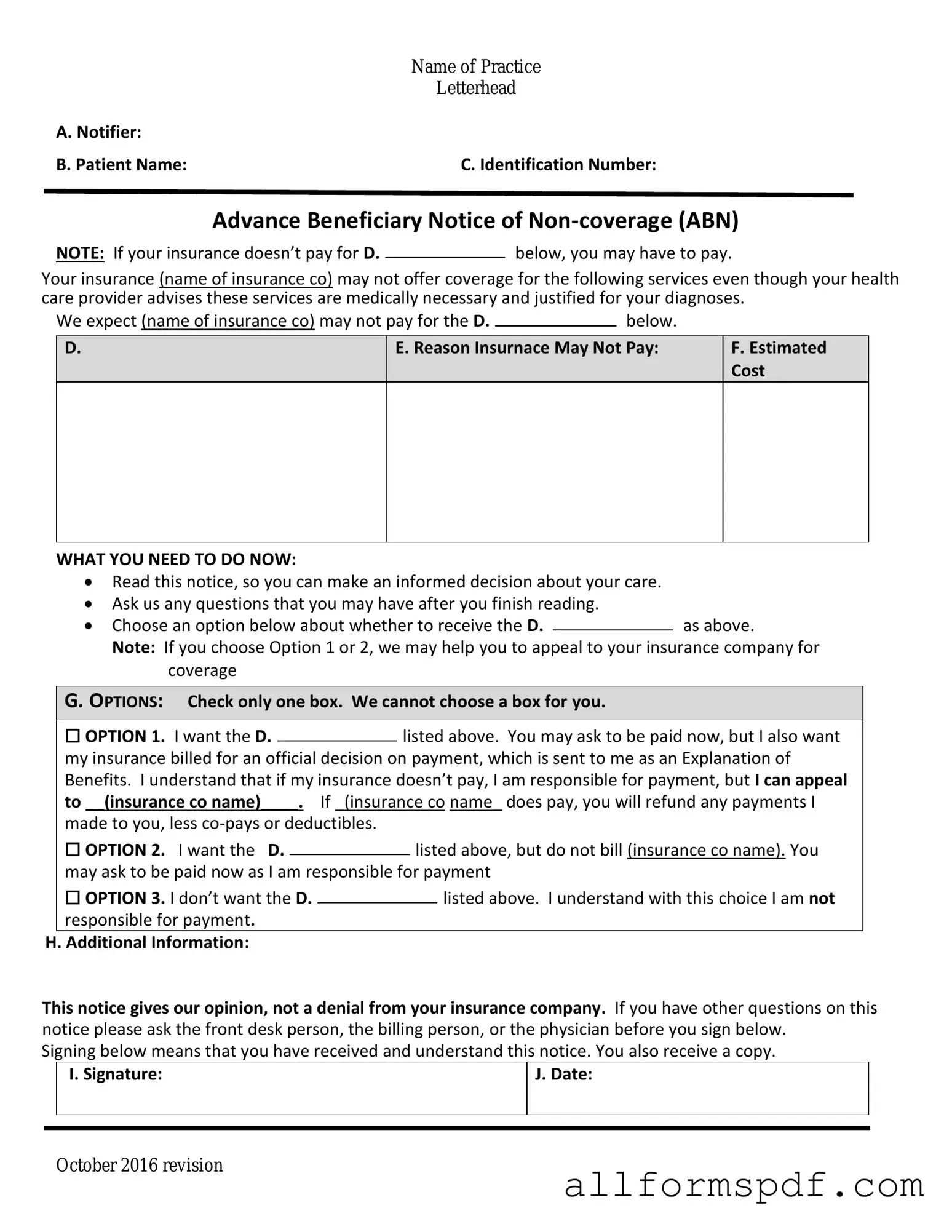Fill Out Your Advance Beneficiary Notice of Non-coverage Form
The Advance Beneficiary Notice of Non-coverage form, commonly referred to as ABN, is a crucial document used in the healthcare system to inform Medicare beneficiaries about services that may not be covered by Medicare. This notice allows patients to make informed decisions regarding their medical care and potential out-of-pocket costs. Understanding the implications of this form can help beneficiaries navigate their healthcare options more effectively.
Create My Advance Beneficiary Notice of Non-coverage Now
